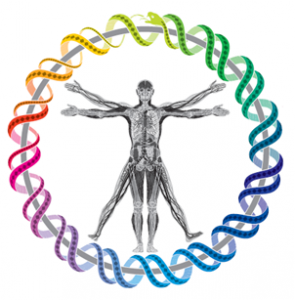Breast cancer – the most common type of cancer affecting women – is often thought of as a single disease. However, mounting evidence suggests that there are multiple subtypes, all of which occur at different rates, have varying levels of aggressiveness, and respond to different types of treatment.
– the most common type of cancer affecting women – is often thought of as a single disease. However, mounting evidence suggests that there are multiple subtypes, all of which occur at different rates, have varying levels of aggressiveness, and respond to different types of treatment.
One of the better understood subtypes is HER2-positive breast cancer, defined by high expression of the HER2 protein. Women with HER2-positive breast cancer are often treated with targeted therapies such as trastuzumab, which has dramatically improved survival rates from HER2-positive breast cancer in the past decade.
Progress in treating HER2-positive breast cancer
 In a Q&A podcast published in BMC Medicine to launch our Spotlight on breast cancer article collection, Sunil Verma from Sunnybrook Medical Center outlines the 30-year journey from the discovery of the HER2 gene in 1984 to the successful treatment of many patients with HER2-positive breast cancer. Verma explains that the use of trastuzumab has decreased the risk of breast cancer recurrence by around 50% when used in the adjuvant setting, and has transformed our approach to treating breast cancer.
In a Q&A podcast published in BMC Medicine to launch our Spotlight on breast cancer article collection, Sunil Verma from Sunnybrook Medical Center outlines the 30-year journey from the discovery of the HER2 gene in 1984 to the successful treatment of many patients with HER2-positive breast cancer. Verma explains that the use of trastuzumab has decreased the risk of breast cancer recurrence by around 50% when used in the adjuvant setting, and has transformed our approach to treating breast cancer.
Unfortunately, trastuzumab resistance develops in some patients, and many who initially respond to treatment develop resistance within one year of starting therapy. In a minireview article, Pernelle Lavaud and Fabrice André from Gustave Roussy Cancer Center outline strategies to overcome trastuzumab resistance, which include dual inhibition of the HER2 protein with trastuzumab plus pertuzumab, combining HER2-directed therapy with chemotherapy, and the development of antibody-drug conjugates.
Verma, who has led pioneering clinical trials showing that the antibody-drug conjugate T-DM1 (trastuzumab emtansine) extends survival in women with advanced HER2-positive breast cancer, highlights that:
“Not only does T-DM1 extend survival, but it also comes with less toxicity and fewer side effects compared with standard treatment… now, T-DM1 would be considered standard care for patients who have progressed after first line anti-HER2 therapy.”
The latest evidence from the phase III Th3RESA randomized trial indicates that T-DM1 improves progression-free survival in metastatic breast cancer patients from 3.3 months to 6.2 months when compared with physician’s choice therapy, without any additional adverse events.
What’s next for HER2-positive breast cancer?
Looking forwards, Lavaud and André describe other proteins that are under investigation as therapeutic targets to overcome trastuzumab resistance, including the oncogenic stabilizer HSP90 and the programmed death-1 signaling pathway. The authors conclude that:
“Since several different targets are under investigation, there is a need to identify predictive biomarkers to optimize combination strategies…[and] facilitate the selection of appropriate patients who can benefit from personalized targeted therapy.”
Verma describes his vision for a ‘total targeted approach’ in the early breast cancer setting, with chemotherapy-free treatment regimens for the majority of patients, in order to improve treatment outcome while reducing side effects.
Is next-generation sequencing a valuable tool in the breast cancer clinic?
 While molecular subtyping – based on the expression of proteins such as HER2 and estrogen receptor – is widely used in the breast cancer clinic to stratify patients and guide treatment decisions, the use of multiplex genomic assays remains controversial. In a forum article published in BMC Medicine, breast cancer specialists debate whether next-generation sequencing (NGS) is ready for routine clinical use, as discussed at the 31st Annual Miami Breast Cancer conference. Debu Tripathy from The University of Texas MD Anderson Cancer Center explains that NGS provides information on gene sequences, copy numbers and gene translocations within a tumor.
While molecular subtyping – based on the expression of proteins such as HER2 and estrogen receptor – is widely used in the breast cancer clinic to stratify patients and guide treatment decisions, the use of multiplex genomic assays remains controversial. In a forum article published in BMC Medicine, breast cancer specialists debate whether next-generation sequencing (NGS) is ready for routine clinical use, as discussed at the 31st Annual Miami Breast Cancer conference. Debu Tripathy from The University of Texas MD Anderson Cancer Center explains that NGS provides information on gene sequences, copy numbers and gene translocations within a tumor.
Kathleen Harnden and Kimberly Blackwell from Duke University School of Medicine advocate NGS as a valuable clinical tool to identify mutations that can be targeted therapeutically, identify prognostic information and inform clinical trial design. On the other hand, Mark Robson from Memorial Sloan Kettering Cancer Center argues that while NGS is a valuable research tool, it does not yet have a place in routine clinical care. Robson explains that mutations identified through NGS may not be targetable using current therapies, and mutations may not have clinical relevance. All authors agree that NGS could be useful to identify those likely to benefit from inclusion in new clinical trials, and we hope that the results of genome-directed clinical trials will provide further insights into whether NGS can be incorporated into routine clinical care.
All of these articles are part of BMC Medicine’s Spotlight on breast cancer article collection, which has launched today and is now open for research submissions. The collection aims to highlight the latest progress across all areas of breast cancer medicine, including clinical studies of new therapies, molecular genomics and translational advances. If you have any research you would like us to consider for inclusion in this article collection, please email bmcmedicineeditorial@biomedcentral.com
 BMC Medicine: passionate about quality, transparency and clinical impact
BMC Medicine: passionate about quality, transparency and clinical impact
2013 median turnover times: initial decision three days; decision after peer review 51 days
Comments